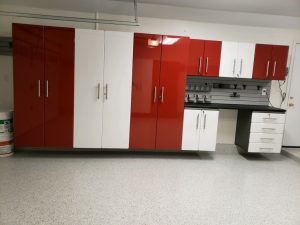Glass plays a crucial role in modern design, offering both functionality and aesthetic appeal. Among the many options available, frosted and opaque glass stand out for their ability to provide privacy while maintaining a sleek look. Though they may seem similar at first glance, their differences can significantly impact how and where they’re used.
Choosing between frosted and opaque glass often depends on specific needs like light diffusion, privacy, and design preferences. Understanding their unique characteristics helps homeowners, designers, and businesses make informed decisions that enhance both style and practicality.
Defining Frosted and Opaque Glass
Frosted glass refers to glass treated through processes like acid etching or sandblasting to create a translucent surface. This texture scatters light, resulting in a softened, blurred effect while still allowing some light to pass through. It’s commonly used when balancing privacy with natural light.
Opaque glass, in contrast, is entirely non-transparent. It undergoes treatments like colored coating, lamination, or baked enamel to achieve complete opaqueness. Unlike frosted glass, opaque glass blocks all visibility and light transmission, making it ideal for areas where maximum privacy or separation is needed.
The distinction between frosted vs. opaque glass lies in their functionality and visual properties. Frosted glass diffuses light and maintains partial visibility, while opaque glass eliminates light and sight. Applications vary based on these attributes, blending aesthetic and practical requirements in different settings.
Manufacturing Processes and Visual Characteristics
Frosted glass and opaque glass are produced through distinct techniques, resulting in unique appearances and functionalities. Frosted glass undergoes processes like acid etching or sandblasting, which roughen the surface to scatter light. These methods create a translucent appearance, allowing diffused light to pass while maintaining privacy. The textured surface can also vary in intensity to suit specific design needs.
Opaque glass, by contrast, is achieved with methods like lamination or colored coating. Lamination layers a non-transparent material between glass sheets, completely blocking light. Colored coatings, often applied during production, give the glass its solid and non-transparent look. These manufacturing processes ensure maximum privacy and visibility control.
In terms of visual characteristics, frosted glass offers soft, blurry visuals with light diffusion, making spaces feel open while reducing glare. Opaque glass presents a bold, solid appearance with no transparency, ideal for complete separation. Both options cater to different design aesthetics and privacy goals, supporting various architectural styles in residential and commercial settings. Factors in the “Frosted vs. Opaque Glass” comparison often include these visual traits and their level of light interaction.
Privacy Solutions: How Each Type Performs
- Frosted Glass: Frosted glass balances privacy with light transmission. Its textured surface blurs visuals, obscuring shapes and details while allowing diffused natural light to pass through. This makes it ideal for spaces requiring partial privacy, such as office partitions, bathroom windows, and shower enclosures. For example, in collaborative office environments, frosted glass partitions create private workspaces without sacrificing openness and brightness.
- Opaque Glass: Opaque glass offers complete privacy by blocking visibility and light entirely. Techniques like lamination or colored coatings ensure no transparency while maintaining a solid appearance. It suits areas needing total separation, such as conference rooms, private offices, or exterior-facing walls in residential and commercial buildings. This material’s light-blocking feature is particularly advantageous for settings requiring controlled lighting or added security interventions.
The choice between frosted and opaque glass depends on privacy needs, light interaction, and design goals. Apex Tempered Glass and other industry options provide tailored solutions for both residential and commercial applications, aligning with varied functional and aesthetic priorities.
Design Applications in Residential Spaces
Frosted and opaque glass play significant roles in residential design by addressing both privacy and aesthetic goals. These glass types enhance interiors while meeting distinct functional needs.
- Bathrooms
Frosted glass is popular for shower enclosures and bathroom windows. It balances privacy with natural light, creating a bright yet private environment. Opaque glass suits bathroom doors or partitions where complete privacy is essential.
- Kitchens
Frosted glass cabinet doors maintain an open feel while obscuring stored items. Opaque glass offers a sleek, modern look for backslashes or full cabinet panels, blending style with functionality.
- Living Rooms
Frosted glass panels work as room dividers, maintaining openness and allowing light diffusion. Opaque glass is ideal for accent walls or sections requiring complete separation.
- Bedrooms
Frosted glass adds elegance to wardrobe doors while maintaining partial visibility. Opaque glass ensures full privacy in elements like sliding doors or partition walls.
- Entryways
Frosted glass in entry doors provides visual security while letting in diffused light. Opaque glass works for side panels or door sections where total privacy is needed.
Both frosted and opaque glass contribute to customization and visual appeal in residential spaces. Options from suppliers, including Apex Tempered Glass, ensure high-quality solutions tailored to specific residential needs.
Commercial Uses: Balancing Function and Aesthetics
Businesses use frosted and opaque glass to improve both privacy and visual appeal in commercial spaces. Frosted glass partitions are common in open-plan offices, offering private work areas that still let in natural light. Frosted conference room walls provide confidentiality while maintaining a modern, translucent aesthetic. Retail stores favor frosted glass for display cases or storefronts, allowing a stylish presentation without compromising security.
Opaque glass is ideal for areas needing full separation. Private offices and meeting rooms often feature opaque glass doors or walls to ensure complete discretion. Restaurants use opaque glass for partitions between dining sections to create an intimate ambiance. In hotels, opaque glass panels in lobbies or spas add elegance and enhance guests’ privacy.
Both frosted and opaque glass serve functional roles while supporting design aesthetics. Apex Tempered Glass provides customized solutions to match specific commercial needs, bridging the gap between functionality and style in “ Frosted vs. Opaque Glass” decisions.
Choosing the Right Glass for Your Design Needs
Frosted and opaque glass each bring unique benefits to modern design, offering versatile solutions for both residential and commercial spaces. Whether the goal is to balance privacy with light or achieve complete separation, these glass types cater to diverse functional and aesthetic preferences.
Understanding their distinct qualities helps homeowners, designers, and businesses make informed choices that align with their specific needs. With options ranging from frosted glass’s soft translucence to opaque glass’s bold opacity, selecting the right glass can elevate any space’s style and practicality.



